This page is a work in progress; I am updating it as I go along!
A Boy and a Guitar
In 1991, I bought my first electric guitar. I was in a band, and I was playing bass, and we got a real bassist, so I switched over to guitar. I had a broken-down 12-string acoustic (a 1967 Yamaha FG-230) with a soundhole pickup, but I needed something that rocked.
It was an Epiphone S-series (S-310B), an attempt by Gibson (which owned Epiphone) to create guitars modeled after the Fender Stratocaster (the most popular electric guitar ever).
Before I made any modifications to it, it looked almost identical to this one. Note the word “Gibson” on the truss rod cover (the little plastic piece on the headstock, near the tuners).
The guitar was cheap (under $200), but it played really well. The pickups were OK, but the tremolo — the bridge piece the “whammy bar” moves back and forth — was garbage. So the guitar got its first modification: a Kahler Killer 2710 double-locking tremolo, which cost more than the guitar itself (about $250, if memory serves). It was installed by my buddy Dave MacMillan at Valley Music Source in Livermore, California.
You can see the extra hardware on the headstock above the nut, and the all-black tremolo. I cut the truss rod cover to fit, and flipped it over (since it had to be shorter, and I thought “Gibs” looked kinda weird). I also added replaced the strap buttons with Schaller S-Locks.
A Long-Awaited Update
In 2004, I decided to make some big changes. I wanted a better sound and a different look, so I replaced all the electronics, the knobs, and the pickguard. All the electronics (potentiometers, switch, jack) were Fender, including the pickups (Fender Fat 50’s). The pickguard was black pearl, and the knobs were knurled chrome with red centers.
It looked pretty great.
Twenty years later, I looked at the guitar, and it needed some work. The tremolo needed maintenance, the tone controls were not working, and I decided to make some radical changes to appearance and performance.
I decided to go back to the original black look, but this time with more black. The tuners? Black. Nut? Black. Strap buttons? Black. Jack plate? Black. Neck plate? Black. Screws? Black. The knobs and switch tip and pickup covers? Black, black, black. Even the strings would be black.
The only parts that wouldn’t be black are the neck and frets, and pickguard, which would be yellow.
In addition to being black, I would get better performance, first by cleaning it up and fixing some problems with the tremolo, but also, the new nut would be a much better nut (a GraphTech Black TUSQ XL) to give better tone and sustain.
I’d replace the jack with a multi-contact jack for a better signal, fix the tone controls, and add a new switching option for the pickups. On a basic Stratocaster wiring setup, you have three single-coil pickups — Neck (N), Middle (M), and Bridge (B) — and the switch gives you five different combinations. All the way back to the bridge is B, then forward one is B+M, then M, then M+N, then N.
But it is a really cool sound to get B+N — the Fender Telecaster does this — but it is not an option in basic Stratocaster wiring. So I will add a toggle switch or a push-pull tone control to add the Neck pickup to whatever configuration is set, giving the option for B+N, as well as B+M+N.
All of the small pieces and parts — not including strings, chemicals, and tools (I bought new shop lights, some cleaners, steel wool, etc.) — came to $190.75, including tax. That is a small amount (less than the cost of the original guitar, and much less than the tremolo I added in 1991!), considering all that’s left of the original guitar is the body and the neck (including frets, and the original screws to bolt the neck to the body). Literally nothing else remains.
That’s why I call it Theseia (or maybe Thesestrat?), after the Ship of Theseus, which some people surmise had every single part replaced on it over the hundreds of years it was in service; a thought experiment is based on this, asking: if all the parts were changed, is it still the same ship? What does it mean to be the Ship of Theseus? (“Theseia” is a female form of “Theseus,” but was also an ancient Greek festival honoring Theseus, at which there was probably music played, perhaps on this very guitar, because who is to say what identity is, anyway?)
Tearing Down and Cleaning the Guitar
So I ordered all the parts, and got to work. The first thing I did was take off the strings and electronics.
Then, to clean up the tremolo, I had to remove that, too. It was the most expensive part of the guitar, and with just some cleanup and maintenance, should get back to working perfectly. Other than some rust, the parts were in great condition.
Some of the tremolo parts lost their blackness — the brass fine tuners, the levers for the locking nut, and the bridge pistons — and that got even worse when I put them in the rust remover, so I blackened them with various chemicals for brass and steel (often used for gun parts) to restore them.
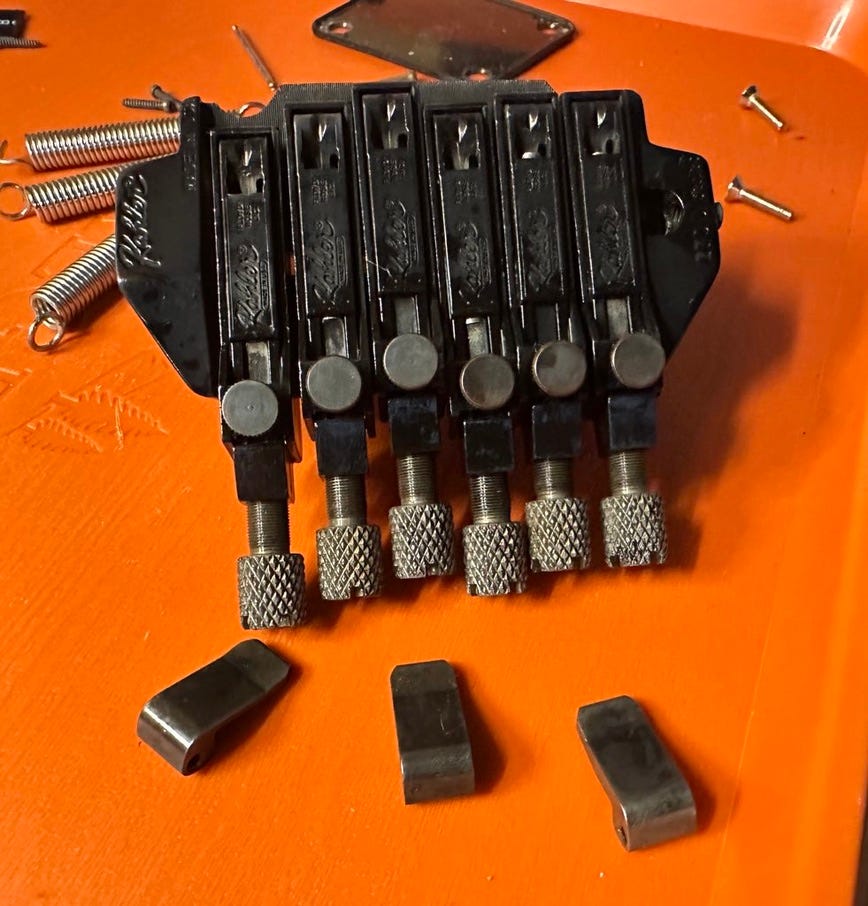
Once cleaned up and blackened, I then removed and cleaned the neck, and replaced the nut. No one makes a perfect replacement nut for this guitar, but GraphTech does make a nut for older Epiphones that was just slightly larger than mine. These particular nuts are actually very tall.
I got the right nut, sanded it down on the ends and a bit on the bottom and front, and got a perfect fit.
I wanted to get the nut and tremolo done first, even before I finished taking the guitar fully apart, because those were the pieces I was most concerned about. But it went great, so after finishing the nut and putting the locking nut back on, I cleaned the neck and waxed the headstock, polished the frets, oiled the fretboard, and put on the new tuners.
Then I cleaned and waxed the body. There’s a lot of nicks, and I am not fixing any of them, except a few are a bit distracting so I just touched them up with paint before waxing, so they would not be as visible.
You can also see doubled holes for some of the pickguard screws: the original pickguard didn’t match up the replacement pickguard perfectly. Also note that there is a lot of room in the bridge pickup slot, probably enough for a full-size humbucker if I wanted it.
I desoldered all of the electronics. Almost all of it will be attached to the new pickguard. But first, I need to clean them, with some electronics cleaner.
To be continued …



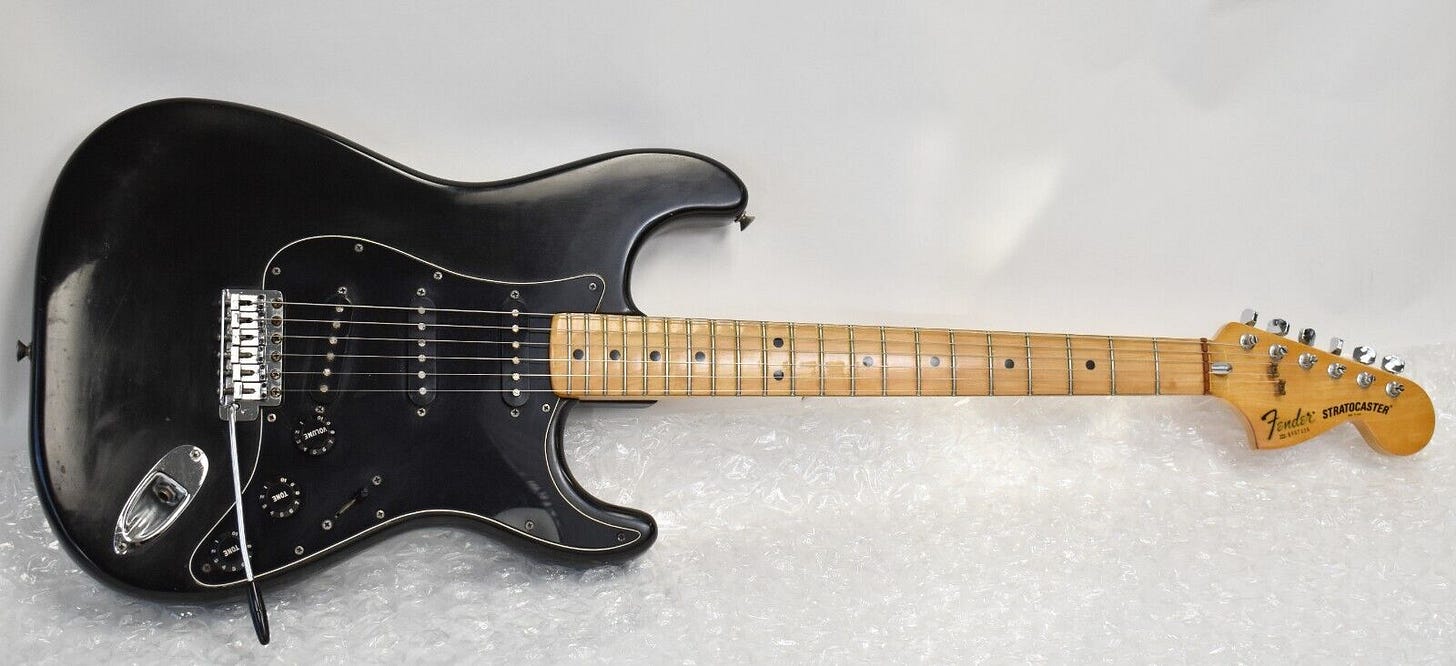
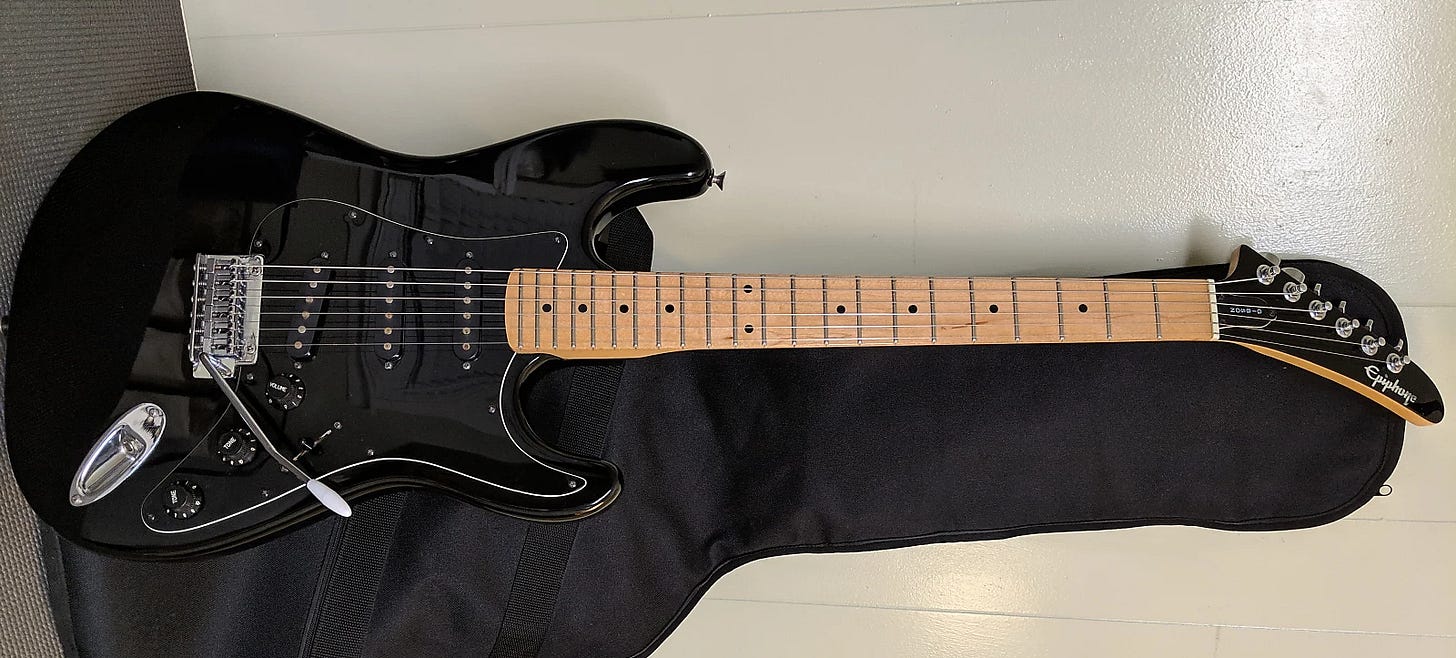
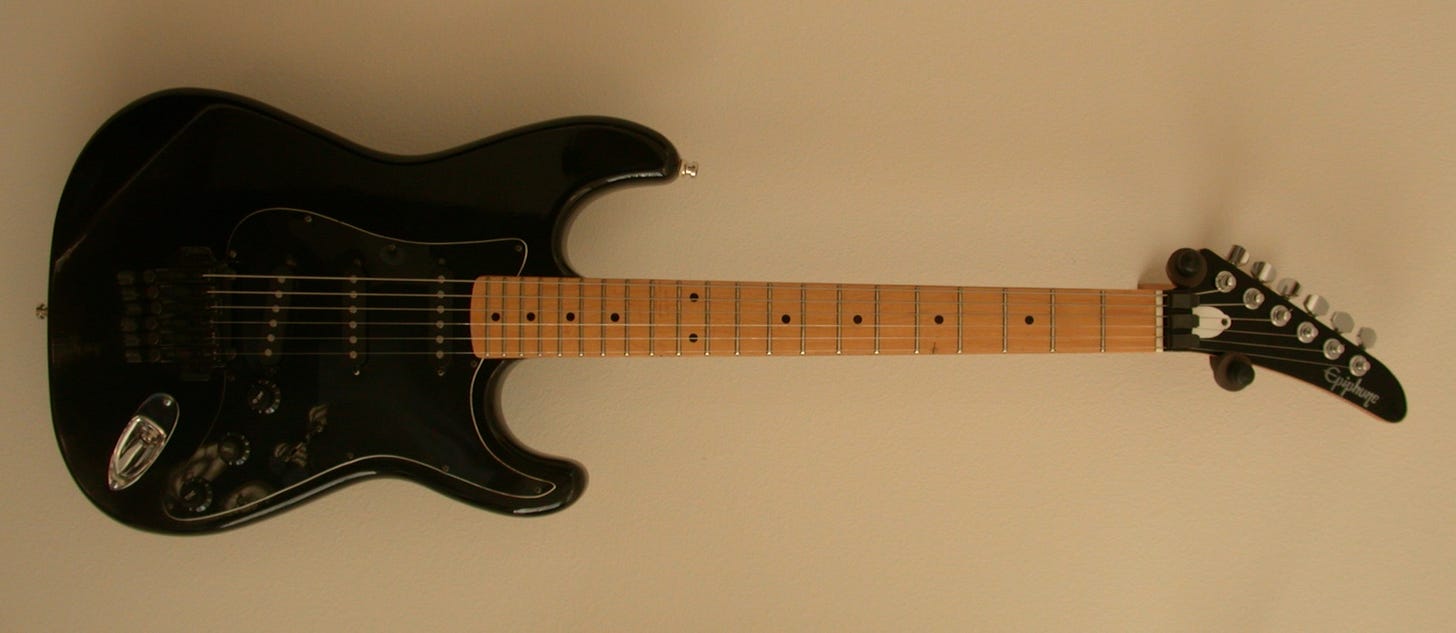
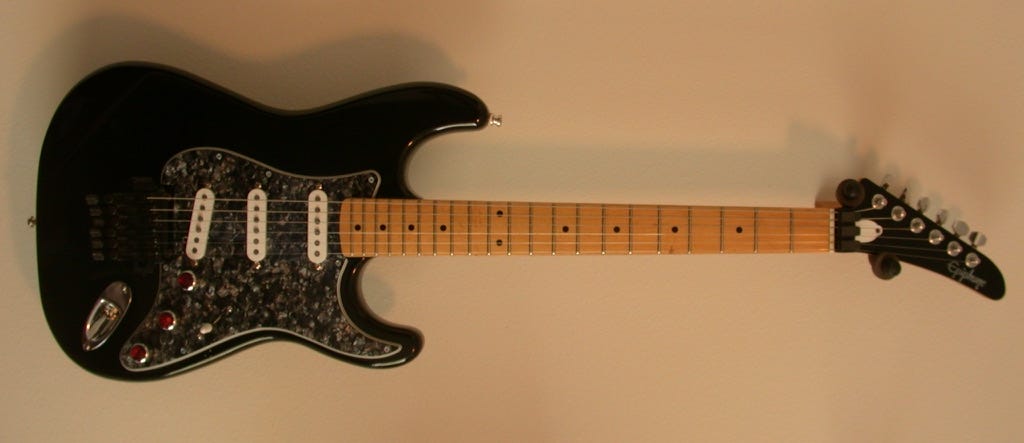

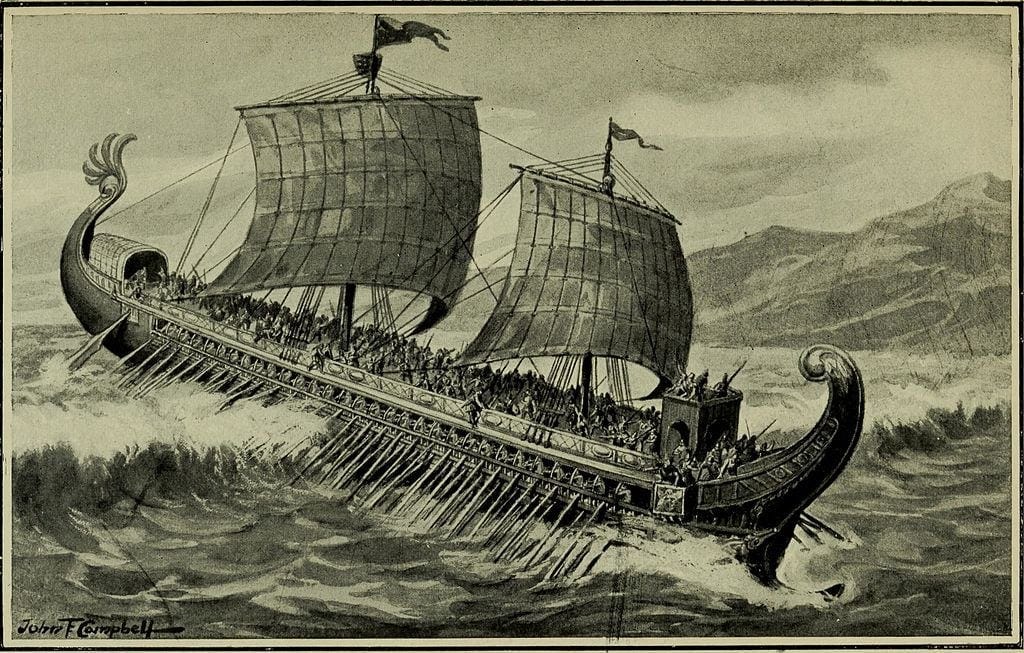
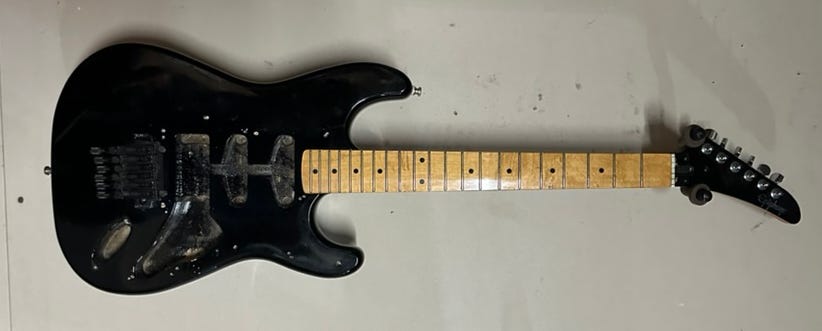

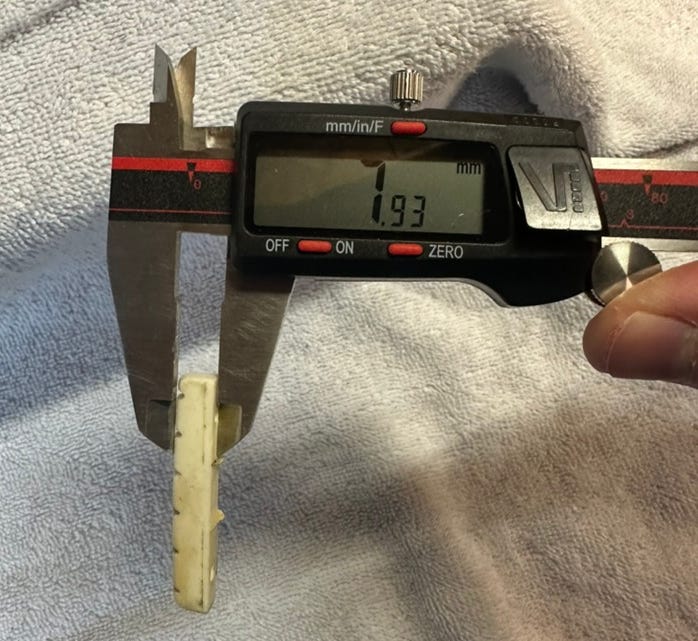
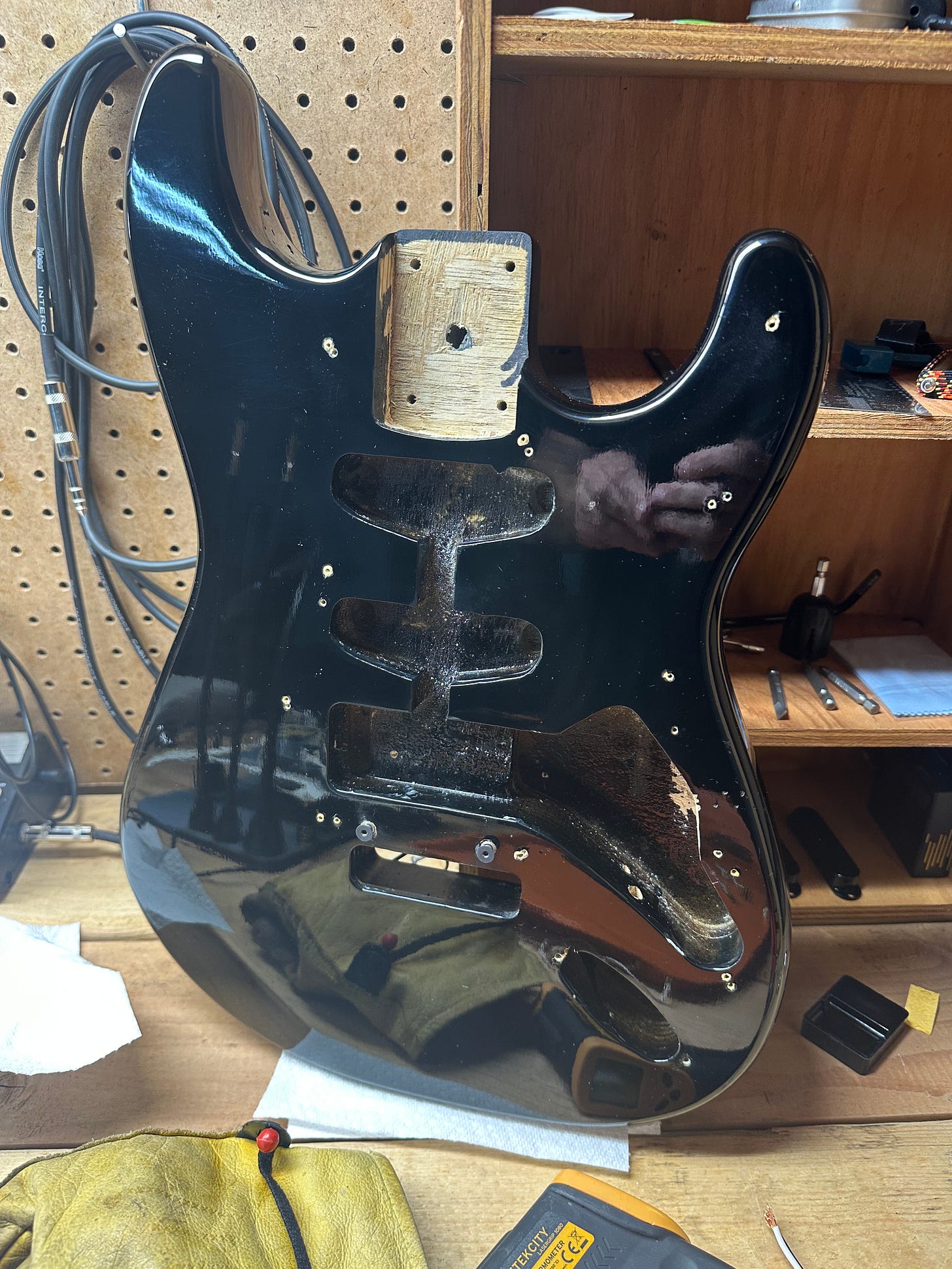
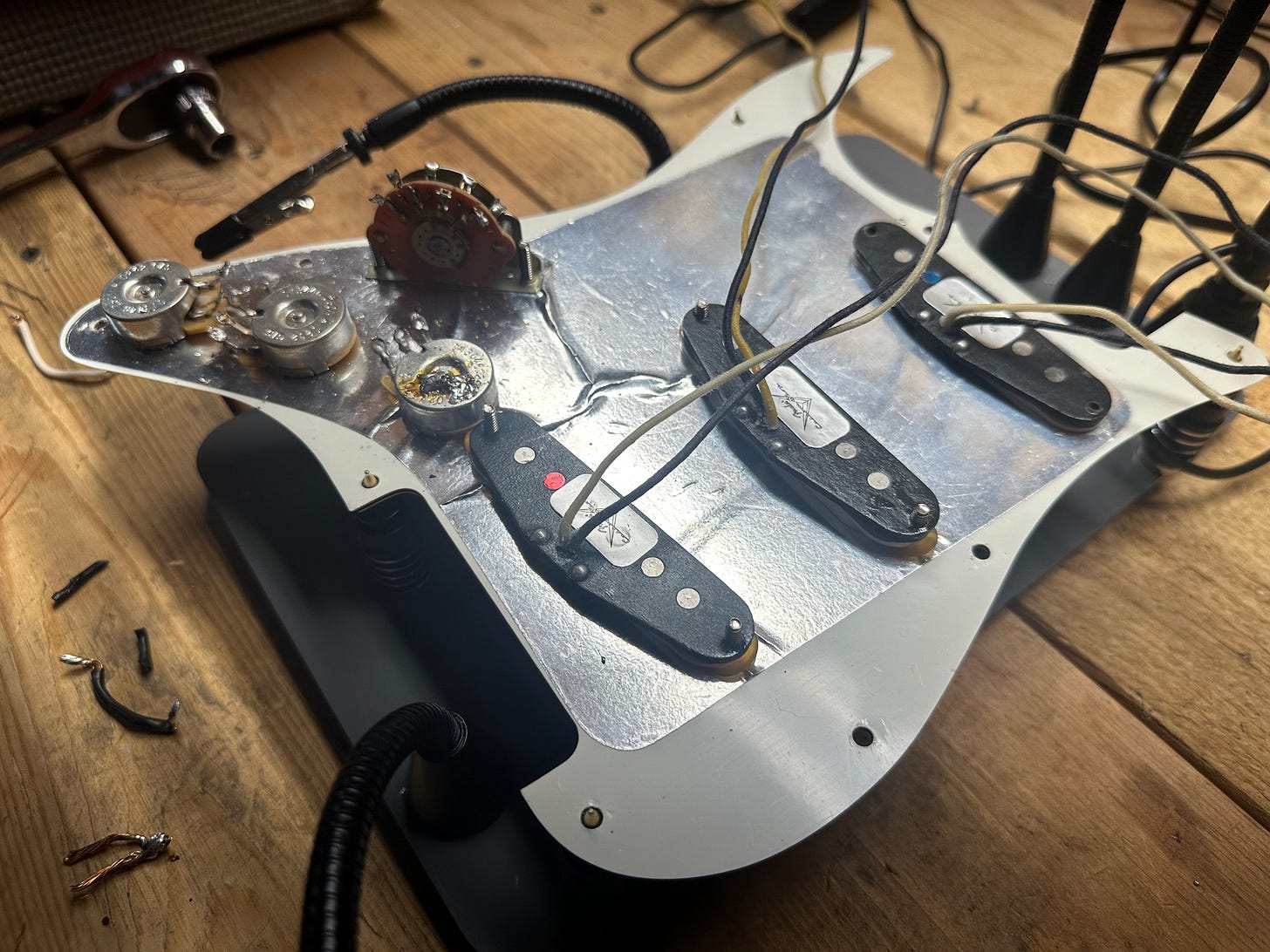
The riff of Theseus, even